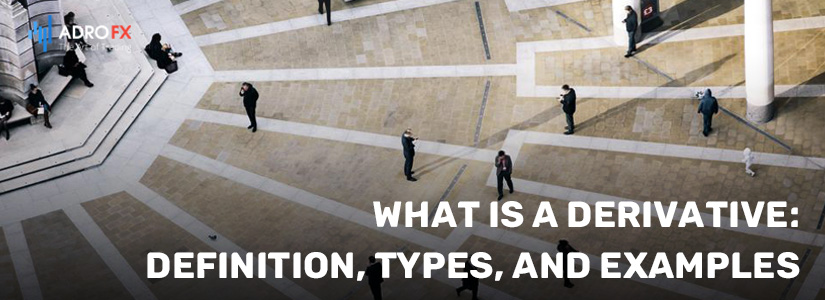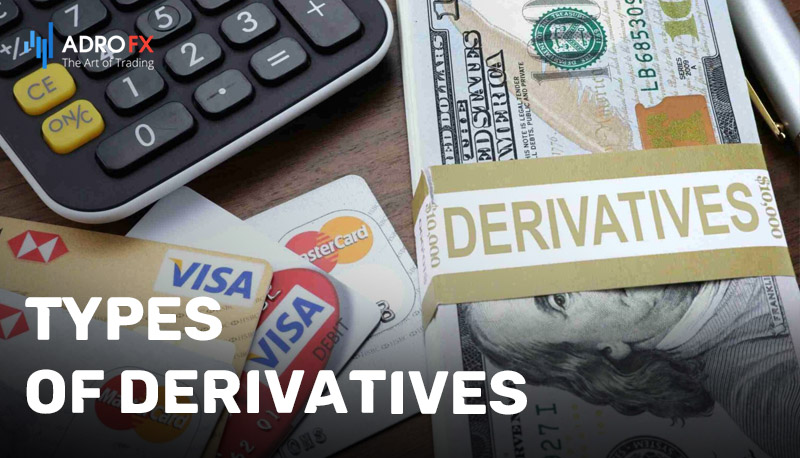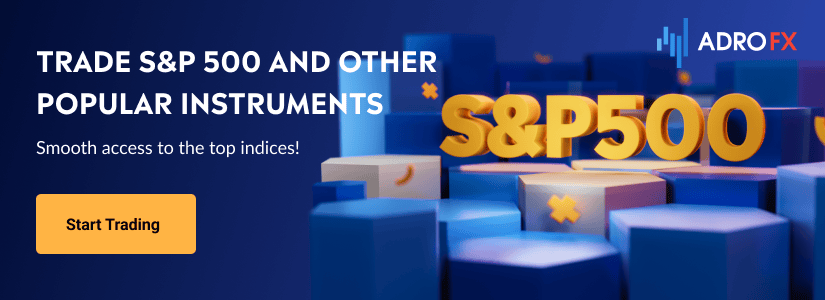What Is a Derivative: Definition, Types, and Examples

Derivatives are financial instruments that play a crucial role in modern financial markets, offering investors and businesses a wide range of benefits and opportunities. These instruments derive their value from an underlying asset, such as stocks, commodities, currencies, or indices, and are utilized for hedging, speculation, and managing investment exposure. Understanding the concept of derivatives and their various types is essential for navigating the complexities of the financial world effectively. This article delves into the definition of derivatives, presents an example to illustrate their application, explores how they work, and examines the different types of derivatives. Moreover, it sheds light on the inherent risks associated with derivatives and emphasizes the importance of prudent risk management for successful utilization.
Definition and Example of a Derivative
A derivative is a financial contract or instrument that derives its value from an underlying asset, such as stocks, bonds, commodities, currencies, or market indices. The value of the derivative is directly linked to changes in the price or value of the underlying asset. Derivatives are used as tools for hedging against risks, speculating on future price movements, and managing investment exposure.
Example: Futures Contract
One common example of a derivative is a futures contract. A futures contract is an agreement between two parties to buy or sell an asset at a predetermined price on a specified future date. The underlying asset can be commodities like oil, gold, or agricultural products, or financial instruments like stock indices or currencies.
Let's consider a hypothetical example of a wheat farmer and a bakery owner using a wheat futures contract:
The Wheat Farmer: A wheat farmer anticipates a bumper harvest in a few months and is concerned that the price of wheat might decrease due to oversupply in the market. To protect against potential losses, the farmer enters into a futures contract to sell a specified amount of wheat at a fixed price on a future date.
The Bakery Owner: On the other side of the contract, a bakery owner foresees increased demand for wheat to make bread in the coming months. Worried that the wheat price might rise due to increased demand, the bakery owner enters into a futures contract to buy a specified amount of wheat at a fixed price on a future date.
When the specified future date arrives, the futures contract will be settled. If the market price of wheat is higher than the fixed price agreed upon in the contract, the wheat farmer benefits because they can sell their wheat at a higher fixed price. The bakery owner, in this case, will face a loss as they are obligated to buy wheat at a price higher than the current market rate.
Conversely, if the market price of wheat is lower than the fixed price in the contract, the wheat farmer will incur a loss as they have to sell their wheat at a lower price. The bakery owner, on the other hand, will benefit from buying wheat at a price lower than the current market rate.
In this example, the futures contract serves as a risk management tool for both the wheat farmer and the bakery owner. It allows them to lock in prices and protect themselves from adverse price movements in the future. Futures contracts are just one type of derivative, and there are various other types, including options, swaps, and forwards, each catering to different financial needs and objectives.

How Derivatives Work
Derivatives are financial instruments that derive their value from an underlying asset or benchmark. They play a significant role in modern financial markets, providing investors with opportunities to manage risk, speculate on price movements, and enhance investment strategies. Let's explore how derivatives work and the key components involved:
1. Underlying Asset: The underlying asset is the financial instrument, such as stocks, bonds, commodities, currencies, or market indices, on which the derivative's value is based. The price or performance of the derivative is closely tied to the fluctuations in the value of the underlying asset.
2. Contractual Agreement: Derivatives are created through contractual agreements between two parties: the buyer (long position) and the seller (short position). The terms of the agreement specify the underlying asset, the contract's size or quantity, the expiration date (in the case of options or futures), and the agreed-upon price (strike price or futures price).
3. Types of Derivatives: There are various types of derivatives, including:
- Futures Contracts
- Options Contracts
- Swaps
- Forwards:
- Credit Derivatives
4. Hedging and Speculation: Derivatives serve two primary purposes: hedging and speculation. Hedging involves using derivatives to mitigate or eliminate the risk associated with changes in the value of the underlying asset. Investors and businesses use derivatives to protect themselves from adverse price movements.
For example, a commodity producer may use futures contracts to lock in prices for their products to avoid losses due to price fluctuations. Similarly, an investor holding a portfolio of stocks may use options contracts to protect against potential market downturns.
Speculation, on the other hand, involves taking on risk with the expectation of profiting from price movements in the underlying asset. Traders and investors who speculate on derivatives aim to capitalize on anticipated price changes, without necessarily owning the underlying asset.
5. Leverage: Derivatives often provide leverage, allowing investors to control a large position with a relatively small investment (margin). While leverage can amplify gains, it also increases the potential for losses. Consequently, trading derivatives requires careful risk management.
6. Exchange-Traded vs. Over-the-Counter (OTC) Derivatives: Derivatives can be traded on organized exchanges, such as futures exchanges, where standardized contracts are bought and sold. These are known as exchange-traded derivatives. On the other hand, over-the-counter (OTC) derivatives are privately negotiated contracts between two parties, customized to their specific needs.
7. Clearing and Settlement: Exchange-traded derivatives are cleared through a clearinghouse, which acts as an intermediary, ensuring the fulfillment of contract obligations. Clearinghouses manage counterparty risk and reduce the risk of default.

Types of Derivatives
Derivatives are a diverse category of financial instruments that serve various purposes, including hedging against risk, speculating on price movements, and enhancing investment strategies. Here are the main types of derivatives commonly used in financial markets:
- Futures Contracts
Futures contracts are standardized agreements to buy or sell an asset at a predetermined price on a specified future date. These contracts are traded on organized exchanges, and the terms are standardized, including the quantity of the underlying asset and the settlement date. Futures are commonly used for commodities, currencies, and financial indices.
- Options Contracts
Options give the holder the right, but not the obligation, to buy (call option) or sell (put option) an underlying asset at a predetermined price (strike price) on or before a specified expiration date. Options provide flexibility to investors and can be used for hedging or speculative purposes.
- Swaps
Swaps are private agreements between two parties to exchange cash flows or other financial variables based on predetermined terms. The most common types of swaps are:
Interest Rate Swaps: Exchange fixed-rate interest payments for floating-rate interest payments or vice versa.
Currency Swaps: Exchange principal and interest payments denominated in one currency for another currency.
Commodity Swaps: Exchange commodity prices or commodity-related cash flows.
- Forwards
Forwards are private contracts between two parties to buy or sell an asset at a specified price on a future date. Unlike futures contracts, forwards are not traded on exchanges, and their terms can be customized to meet the needs of the parties involved.
- Options on Futures
Options on futures are similar to standard options contracts but are based on underlying futures contracts rather than the underlying asset itself. These derivatives offer additional flexibility and can be used to hedge or speculate on future price movements.
- Credit Derivatives
Credit derivatives are designed to manage credit risk and typically involve the risk of default by a borrower or issuer. Some common credit derivatives include:
Credit Default Swaps (CDS): Provide protection against credit defaults of specific bonds or loans.
Total Return Swaps: Transfer both credit risk and market risk associated with a specific asset or portfolio.
- Equity Derivatives
Equity derivatives are linked to the price movements of individual stocks or stock indices. They include:
Equity Options: Give investors the right to buy or sell shares of a specific stock at a predetermined price within a specified period.
Equity Index Futures: Track the performance of a stock index and allow investors to speculate on or hedge against market movements.
- Interest Rate Derivatives
Interest rate derivatives are linked to changes in interest rates and include:
Interest Rate Swaps: Exchange fixed and floating-rate interest payments.
Interest Rate Futures: Settle at a predetermined interest rate and are often used to hedge against interest rate fluctuations.
Each type of derivative serves specific financial needs and objectives, offering investors and businesses valuable tools for managing risk and capitalizing on market opportunities. However, derivatives can be complex and carry inherent risks, so proper understanding and risk management are crucial for successful use.

Risks of Derivatives
Derivatives are powerful financial instruments that offer various benefits, such as risk management and speculative opportunities. However, they also come with inherent risks that investors and businesses need to understand and manage effectively. Here are the main risks associated with derivatives:
Market Risk
Market risk is the potential for losses due to changes in the value of the underlying asset. The prices of derivatives are directly linked to the price movements of the underlying assets or benchmarks. If the market moves unfavorably, the value of the derivative may decrease, leading to financial losses.
Leverage Risk
Derivatives often provide leverage, which means a small investment (margin) controls a much larger position. While leverage can amplify gains, it also magnifies losses. Traders and investors need to exercise caution when using leverage, as it can quickly lead to significant losses if the market moves against them.
Counterparty Risk
Counterparty risk arises when one party in a derivative transaction defaults on its obligations. In over-the-counter (OTC) derivatives, there is no central clearinghouse, so the creditworthiness of the counterparties becomes crucial. If a counterparty fails to meet its contractual obligations, the other party may suffer losses.
Liquidity Risk
Liquidity risk refers to the difficulty of buying or selling a derivative quickly and at a fair price without significantly affecting its market price. Some derivatives, especially those with complex structures or limited trading volumes, may experience low liquidity, making it challenging to exit positions during volatile market conditions.
Credit Risk
Credit risk relates to the potential for a counterparty to default on its contractual obligations. In derivatives trading, counterparties often exchange large notional amounts, leading to substantial credit exposure. The creditworthiness of the parties involved becomes a critical consideration.
Operational Risk
Operational risk encompasses the potential for losses due to errors, system failures, or human mistakes in the execution and processing of derivative transactions. Inadequate risk management procedures and operational controls can result in significant financial losses.
Regulatory Risk
Derivative markets are subject to complex regulatory frameworks. Changes in regulations, reporting requirements, or capital adequacy rules can impact derivative trading and may increase compliance costs for market participants.
Systemic Risk
Systemic risk refers to the potential for a failure or crisis in one part of the financial system to spread and cause disruptions in other parts of the system. If derivatives are widely used and interconnected, a significant event affecting one market could have broader systemic implications.
Final Thoughts
In conclusion, derivatives are powerful financial instruments used for risk management and investment strategies. They derive their value from underlying assets, allowing investors to hedge against price fluctuations and speculate on future movements. While offering various benefits, derivatives come with inherent risks, such as market, leverage, and counterparty risks. To utilize derivatives effectively, understanding their complexities and implementing robust risk management practices are essential. By doing so, investors can harness the potential of derivatives while safeguarding their interests in the dynamic world of finance.
About AdroFx
Established in 2018, AdroFx is known for its high technology and its ability to deliver high-quality brokerage services in more than 200 countries around the world. AdroFx makes every effort to keep its customers satisfied and to meet all the trading needs of any trader. With the five types of trading accounts, we have all it takes to fit any traders` needs and styles. The company provides access to 115+ trading instruments, including currencies, metals, stocks, and cryptocurrencies, which make it possible to make the most out of trading on the financial markets. Considering all the above, AdroFx is the perfect variant for anyone who doesn't settle for less than the best.








